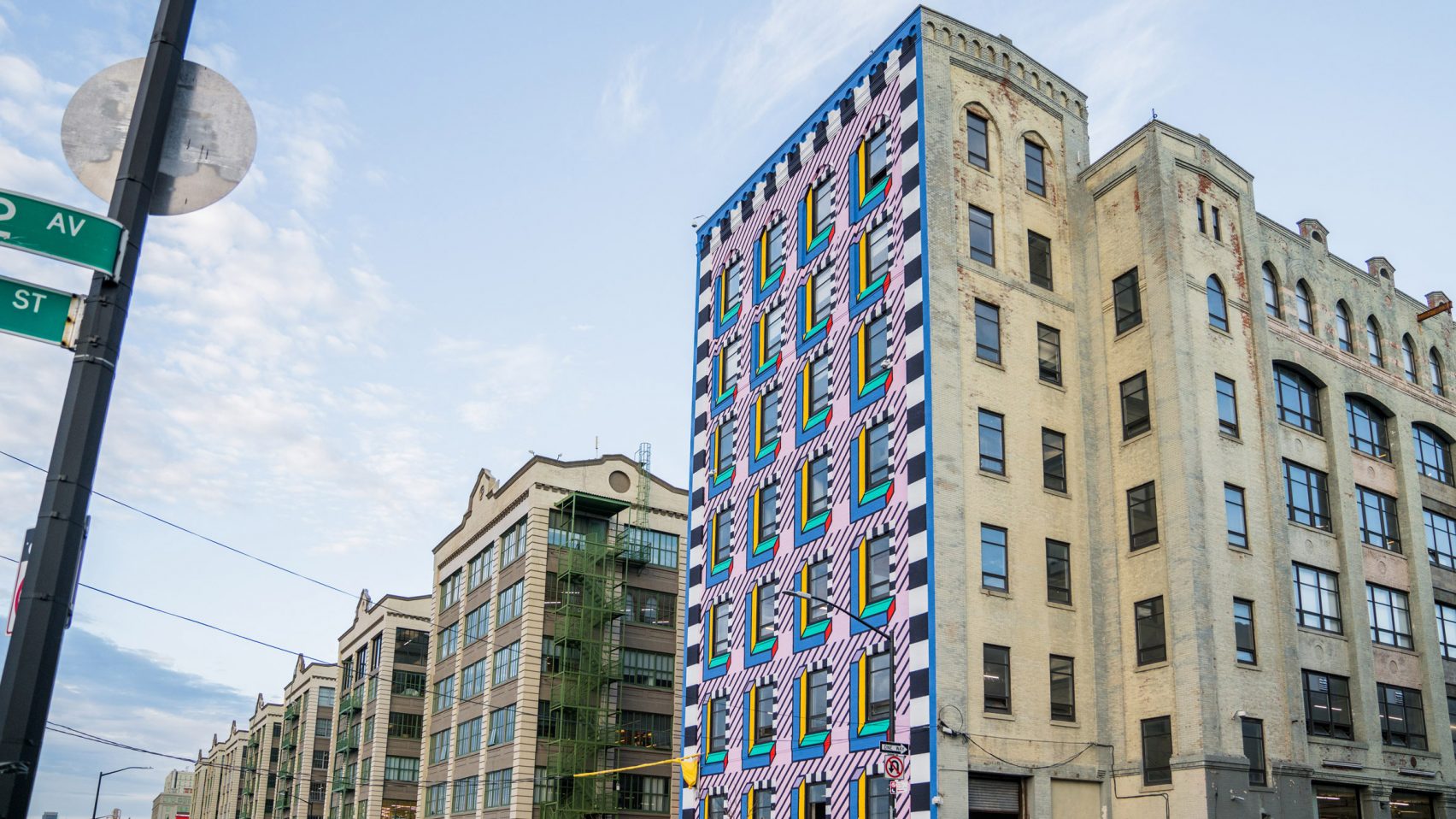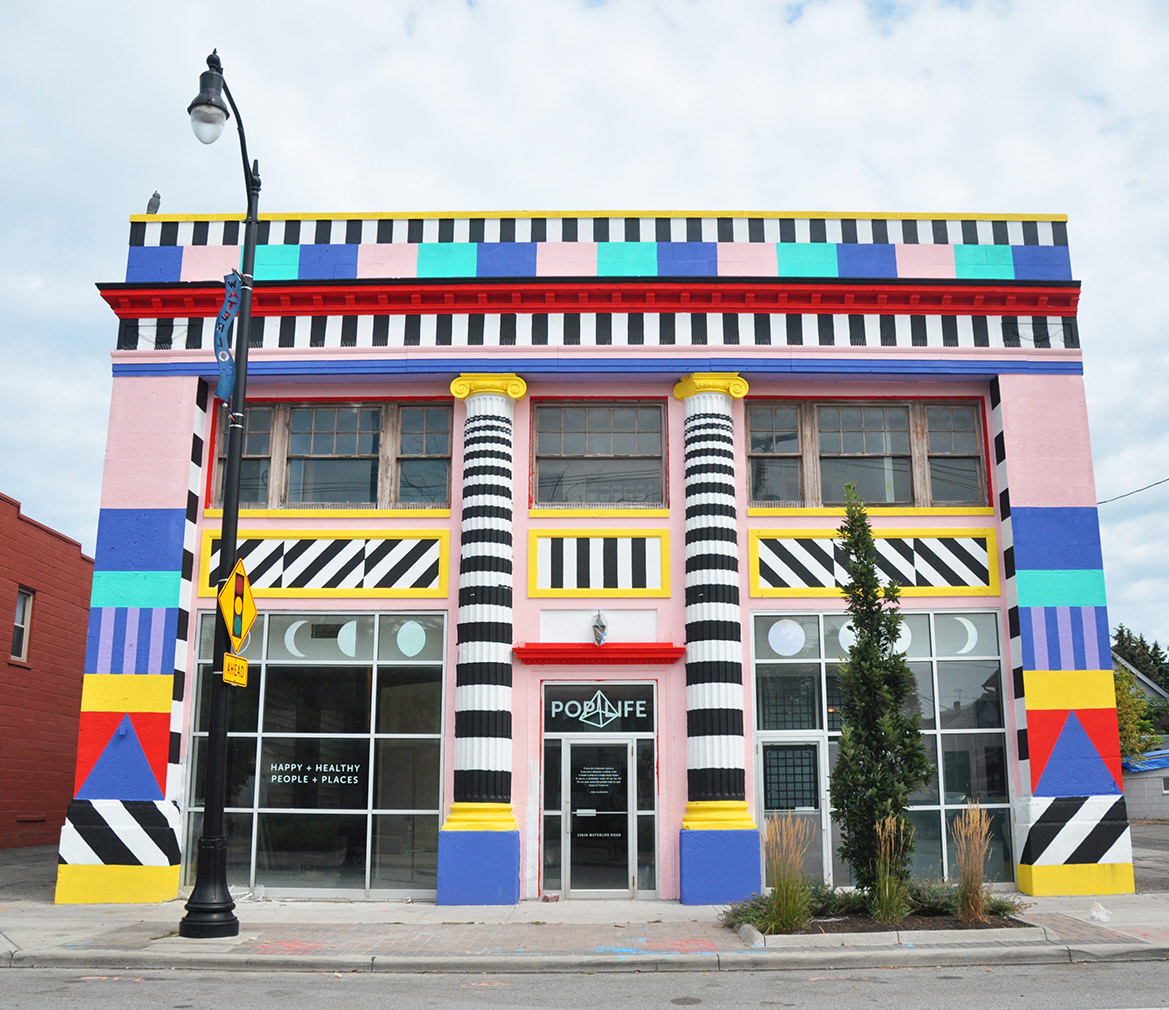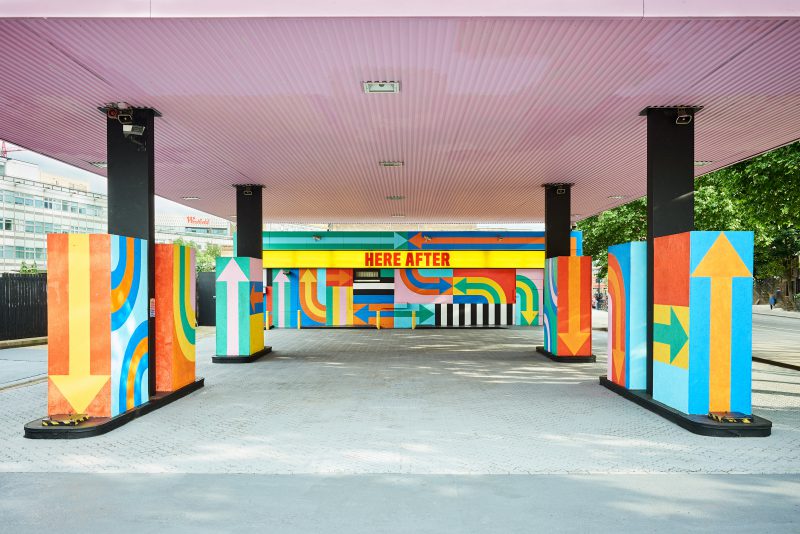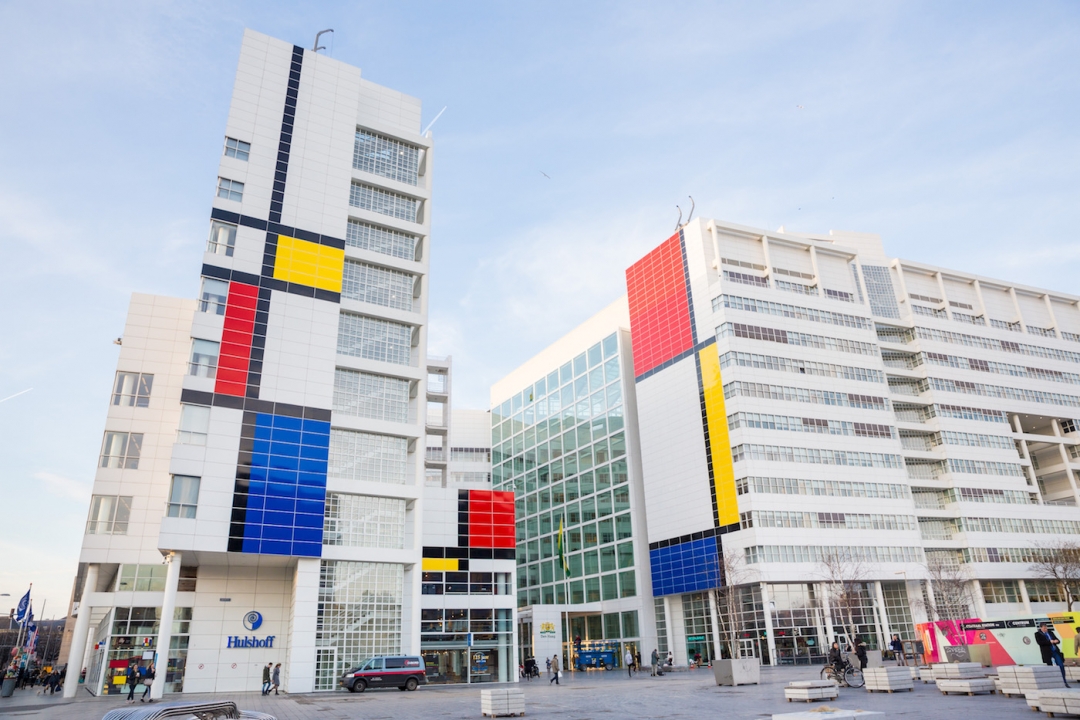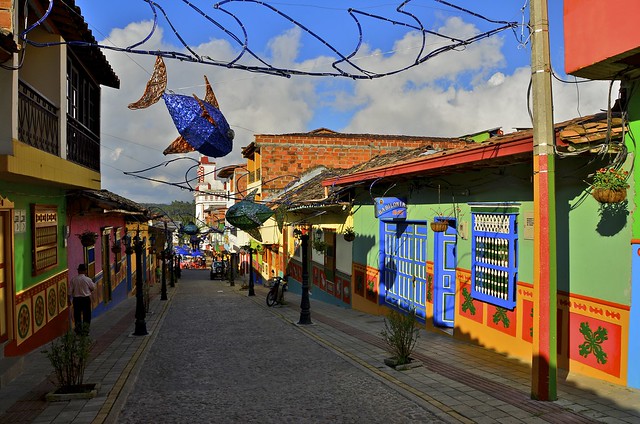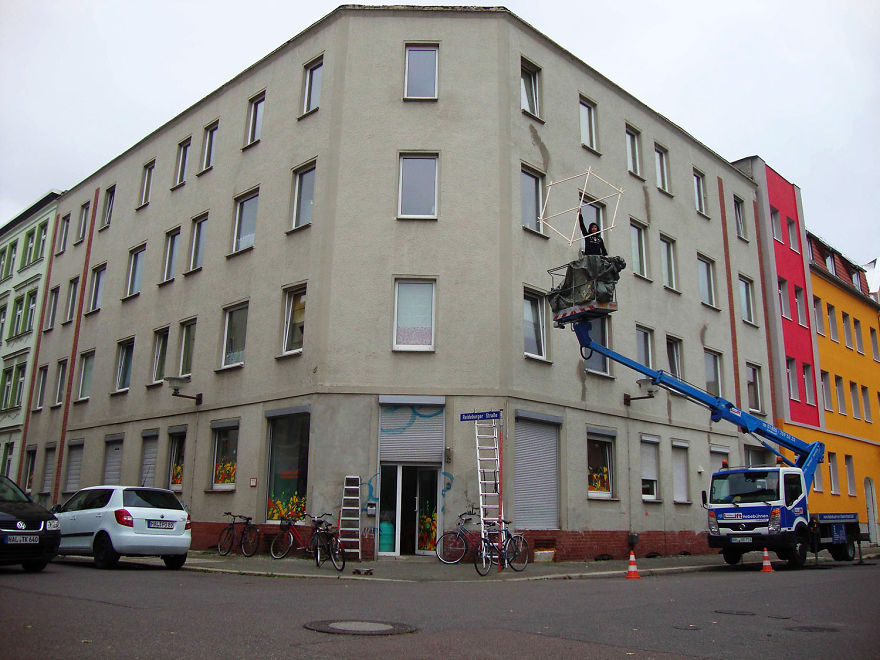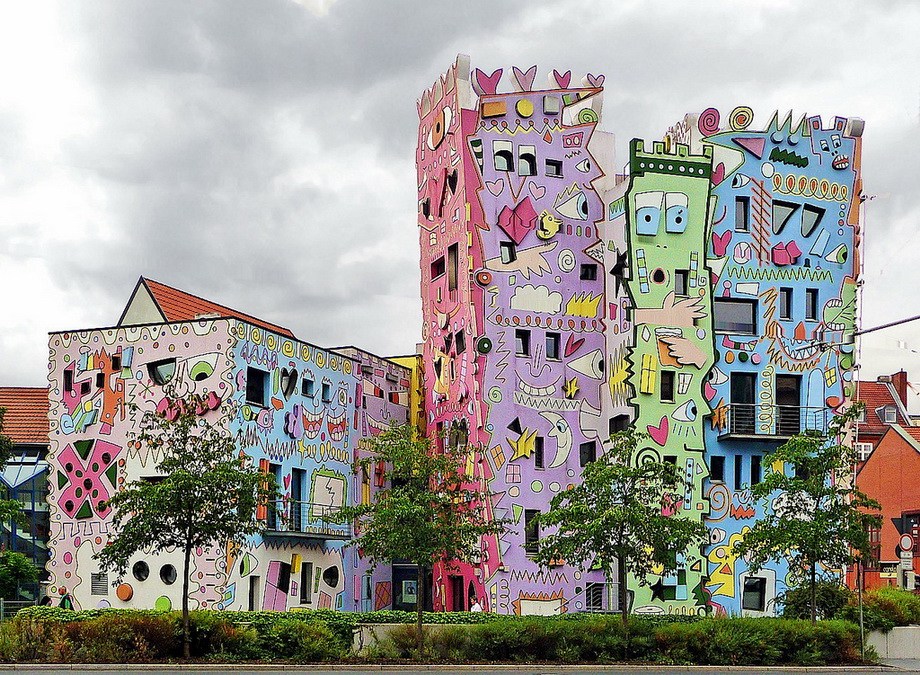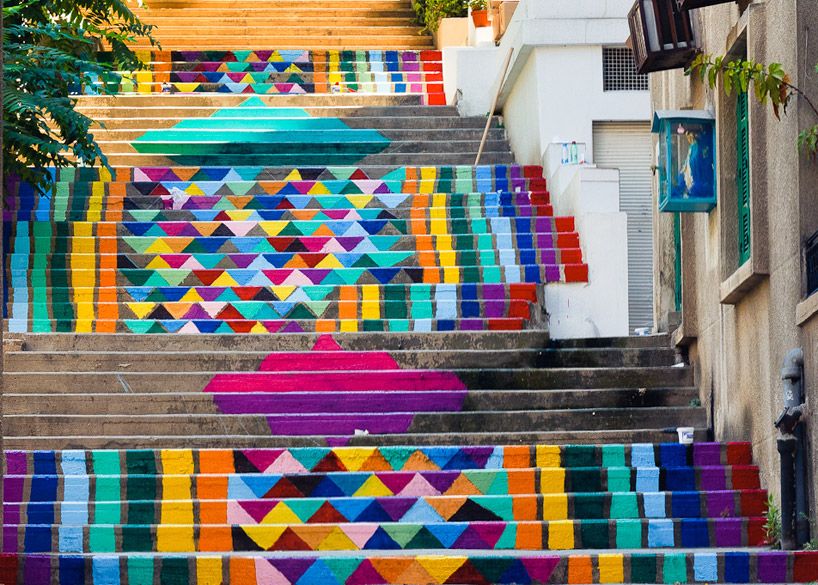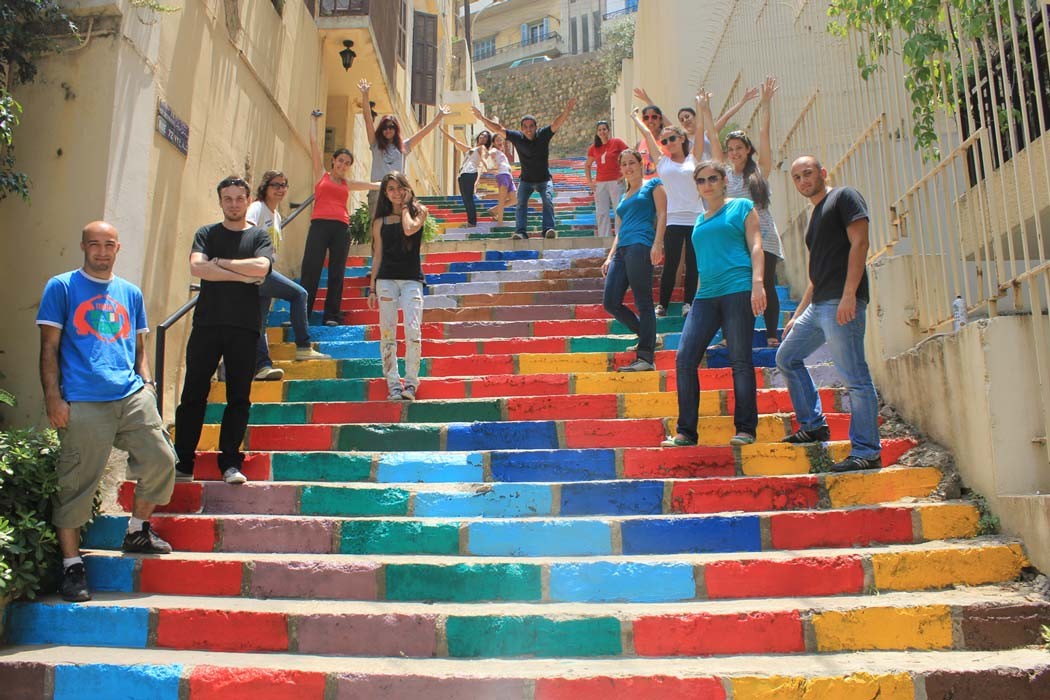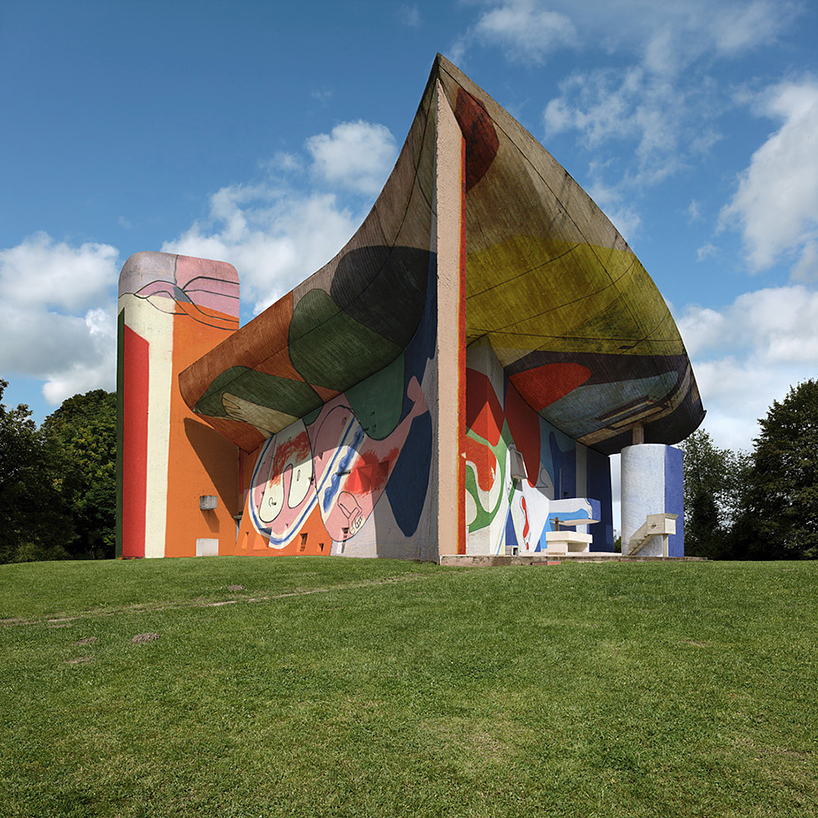Preserving Culture & Heritage
The Memphis Design Movement doesn’t come from Tennessee, as you might imagine, but rather 1980s Italy. Loud and busy, its signature graphics (with a name taken from a Bob Dylan song) began as a rebellion against what was considered “good taste” at the time. It takes inspiration from Art Deco, Pop Art and 1950s kitsch and features a whole lot of bright colors, geometric objects and squiggles. It might have slipped into design nerd trivia territory, but it’s making a comeback today, thanks in part to projects that make it more visible than ever. Its motifs have been popping up in all sorts of public places, from derelict gas stations in Brooklyn to bank buildings in Ohio and restaurants in Moscow. Artistic duo Craig & Karl and graphic artist and “purveyor of positivity” Camille Walala are among the major figures reviving this fun and perhaps a little divisive movement.
Rotterdam-based firm Studio Vollaerszwart applied not paint but large adhesive rectangles of color to The Hague’s City Hall building in tribute to the famous Dutch modern art movement De Stij, creating “the largest Mondrian painting in the world.” The project celebrates Dutch art history while honoring De Stijl’s goal of uniting art, design and architecture into a cohesive aesthetic.
In many cases, the most colorful cities and neighborhoods in the world are carrying on traditions that have been in place for decades or even hundreds of years. The vivid island lagoon of Burano, Venice is one example along with Guatapé, Colombia and the Caminito District of Buenos Aires, Argentina.
All for the Love of Art
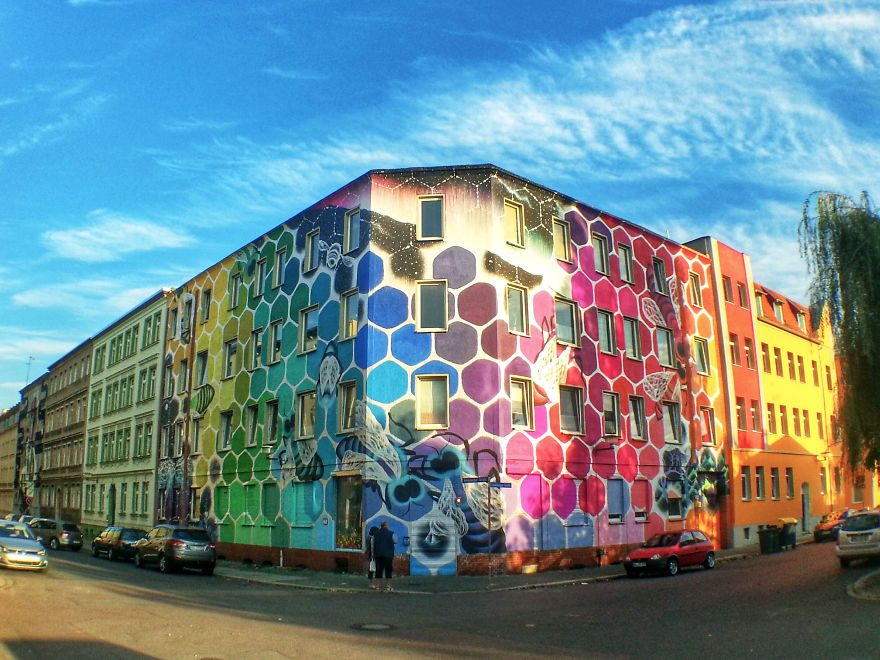
You really don’t need a reason to paint a building a bright color or cover it with a unique work of art other than the fact that it brings you joy. Art is reason enough in its own right to justify such transformations, like the “Honeycomb of Life” mural by Marina Zumi that upgraded an ugly gray building for the “All You Can Paint” Festival in Germany.
Residents of Brunswick, Germany weren’t initially thrilled with New York pop artist James Rizzi painted huge, goofy murals onto multi-story buildings in a historic neighborhood, but they’ve reportedly come to love the psychedelic madness of it all. Though Rizzi passed away in 2011, “Happy Rizzi House” lives on.
Lebanese artist collective Dihzahyners take to the streets of Beirut to infuse the city with bright patterns and motifs. Their favorite canvas appears to be staircases, creating intriguing aisles of color in between the historic city blocks.
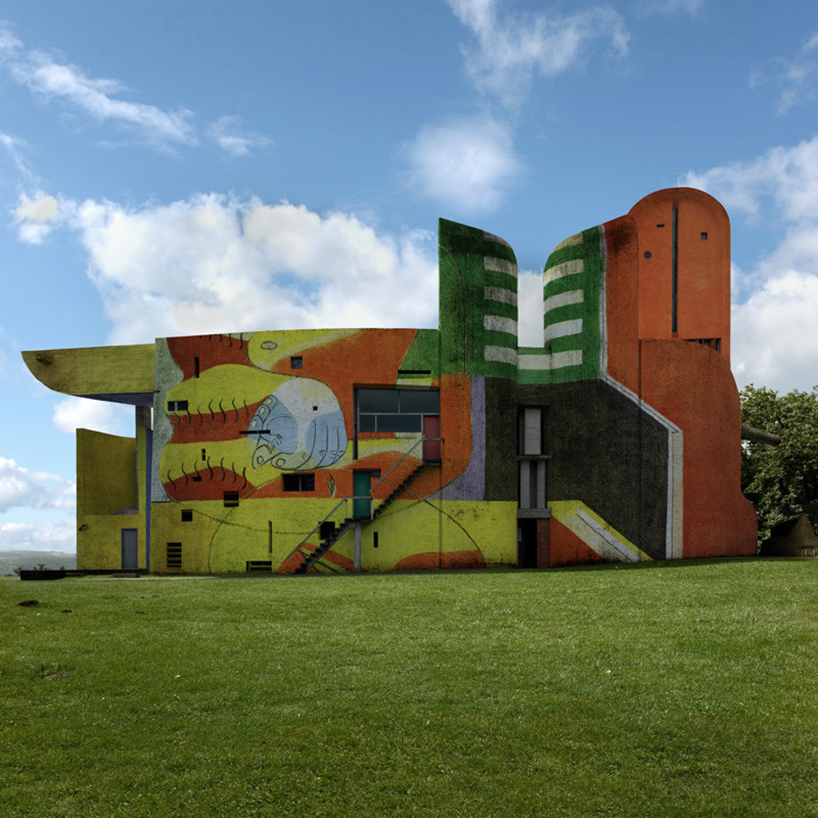
While this last project is just a digital rendering and not a real mural project, it’s an interesting visualization of how different buildings could be if they were more colorful, much like the revelations that Greek and Roman statuary was once painted in vivid hues. Belgian photographer Xavier Delory applied a set of artworks painted by legendary architect Le Corbusier onto some of his most famous Modernist buildings, making a case for large-scale works of art. The results certainly change the overall effect of the elegantly minimal structures, but whether that’s for the better or worse may be a matter of personal opinion.
